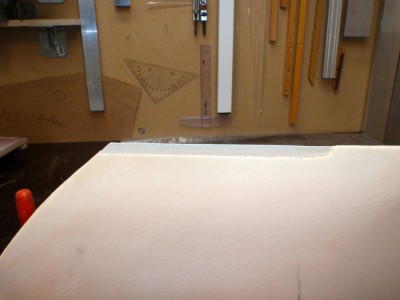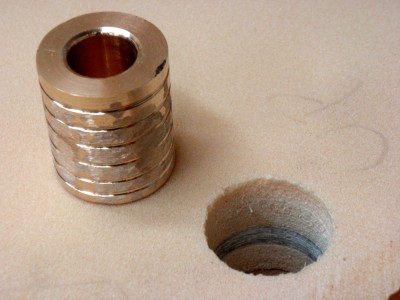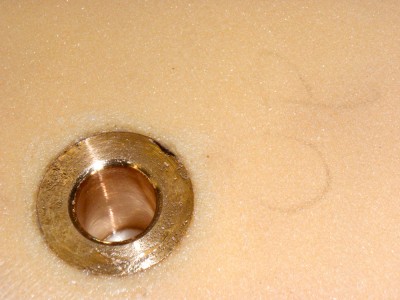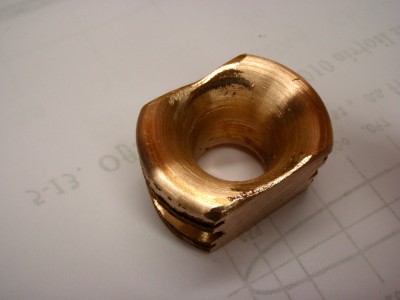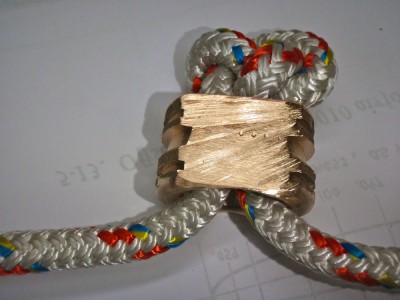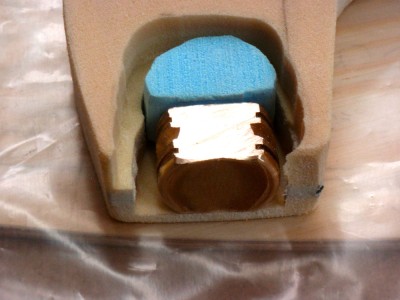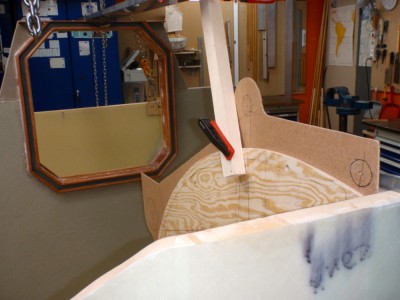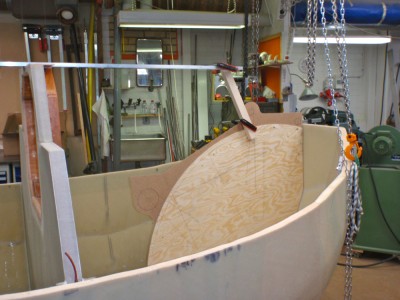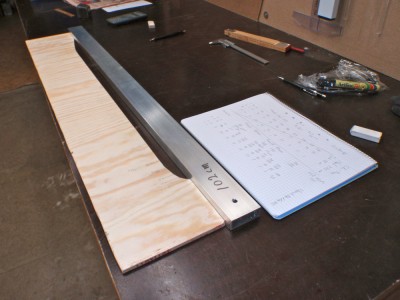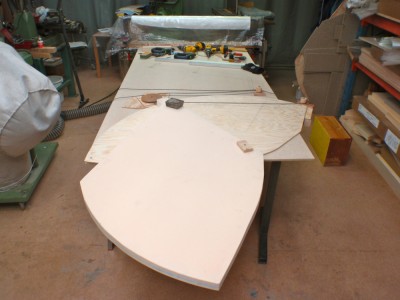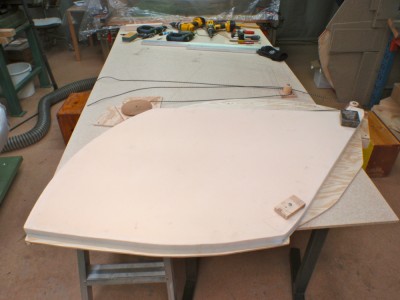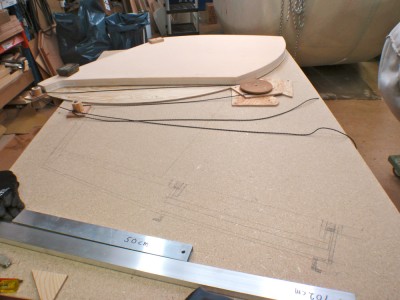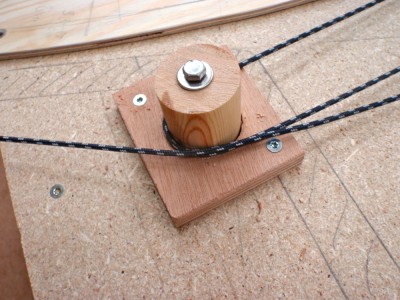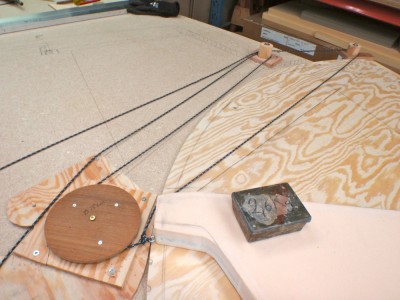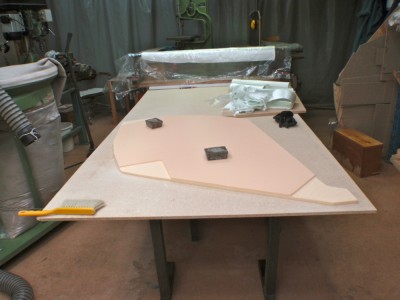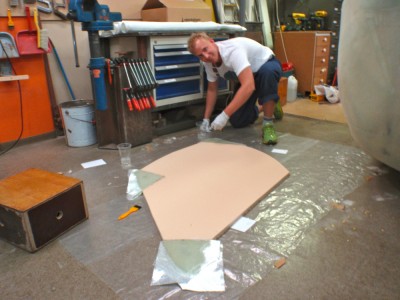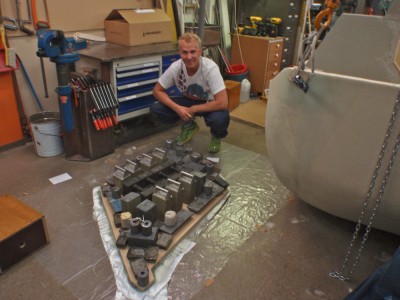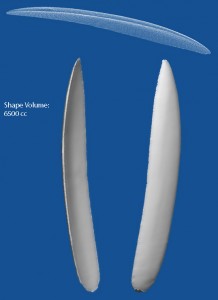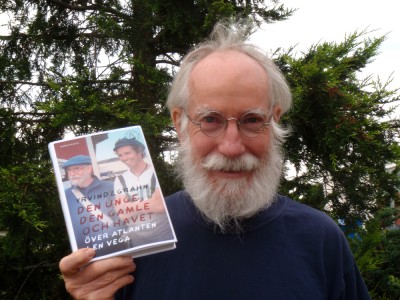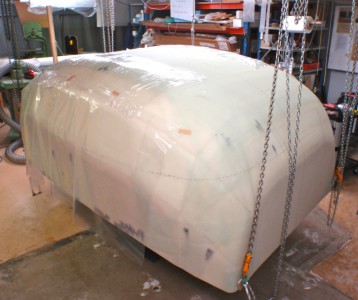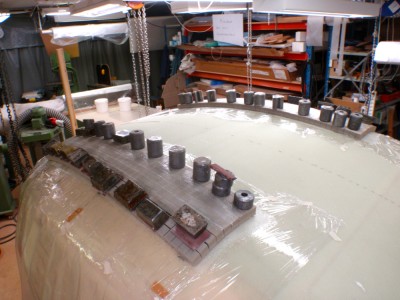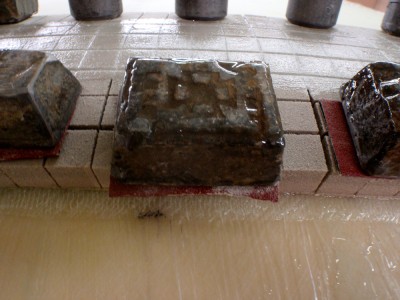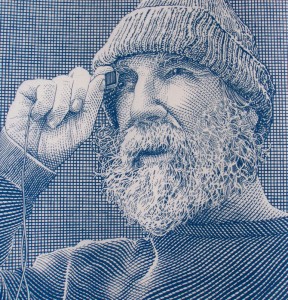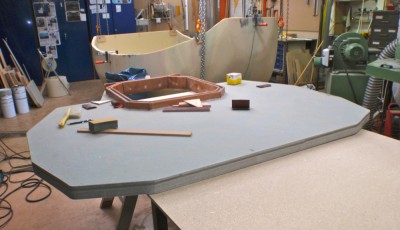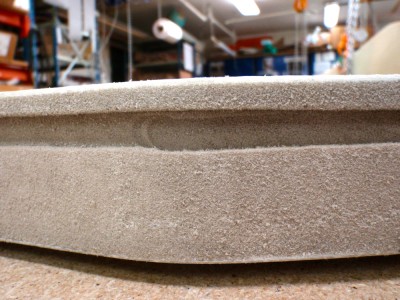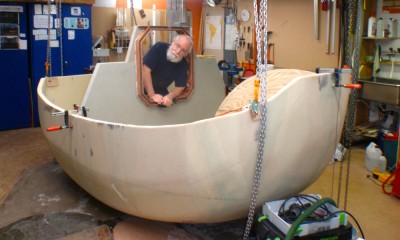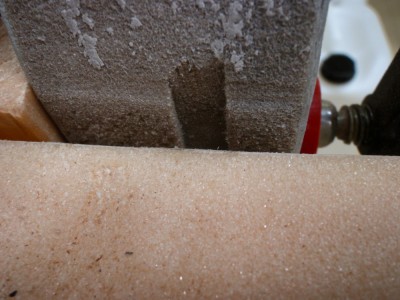I keep working on the C.B. I like to make it as good as I can. It is excessive, but in a world were yachts are done to minimum standard- except the finish which Neptune dont care about- it is nice to have something to be proud of. Besides it is also nice when you are out there to know that what ever the sea will throw at you you do not have to worry but can sleep peacefully.
The C.B. is now shaped. The trailing edge is very thin therefore I have shaved away the Divinycell there and replaced it with epoxy thickened with migrofibers.
I have also made a bronze bearing for the axis. The pin diameter will be 18 mm close to 3/4 inch.
The below picture shows the shaped C.B. Click once or twice to enlarge.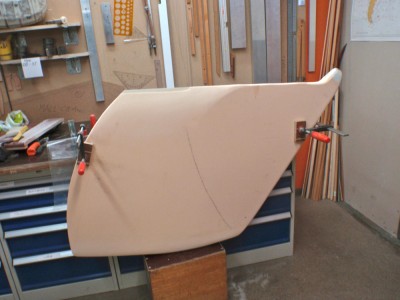
The below picture shows the shaved away Divinycell.
The below picture shows the pin bronze bearing. Some gassfibre reenforcement can be seen in the hole, more will be addded higher up.
The below picture shows the bronze pin bearing epoxy-glued in position. Later some Divinycell will be routed out and replaced with glass fibre reenforcement.
To be continued…
Regards Yrvind.

